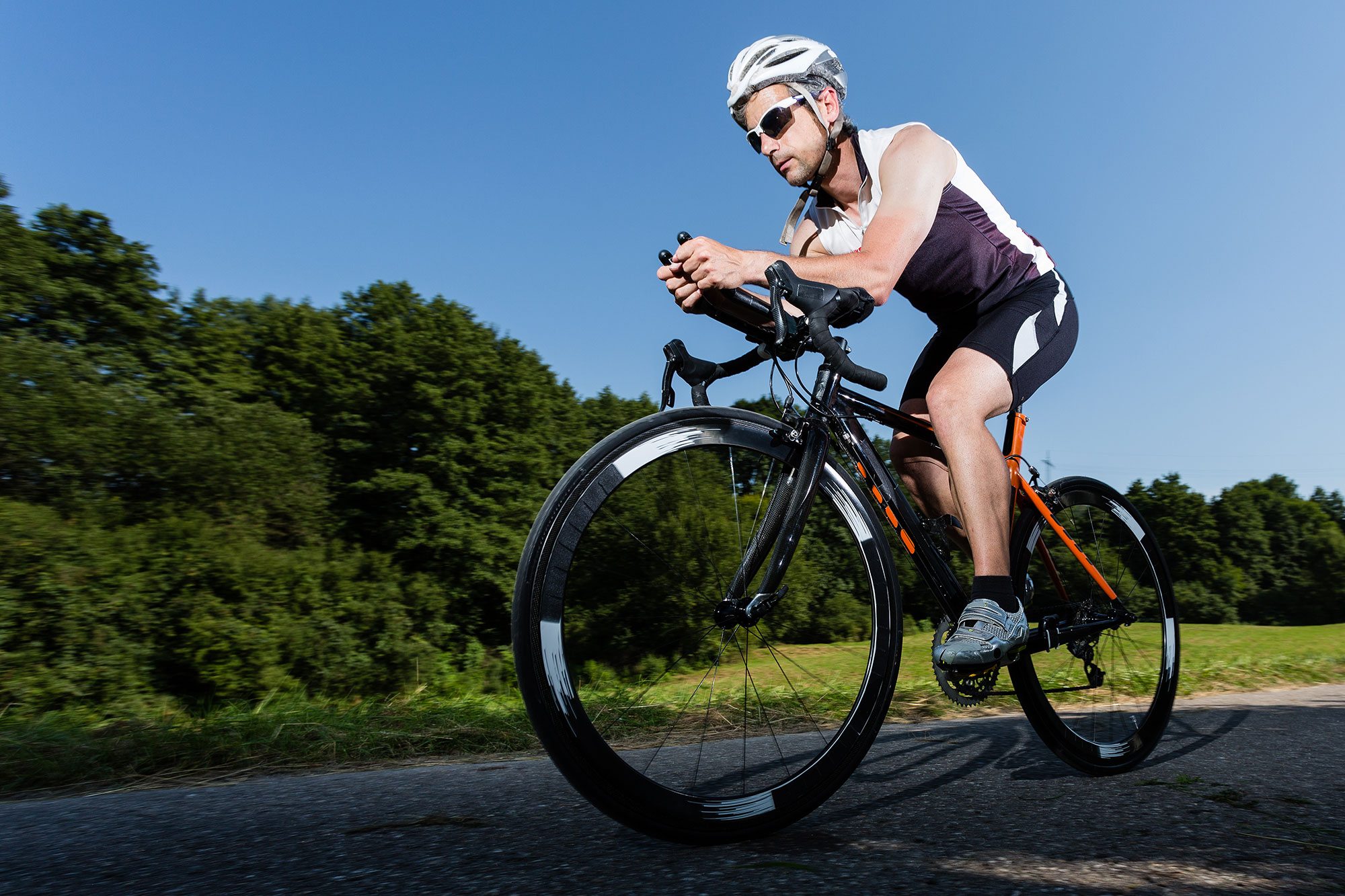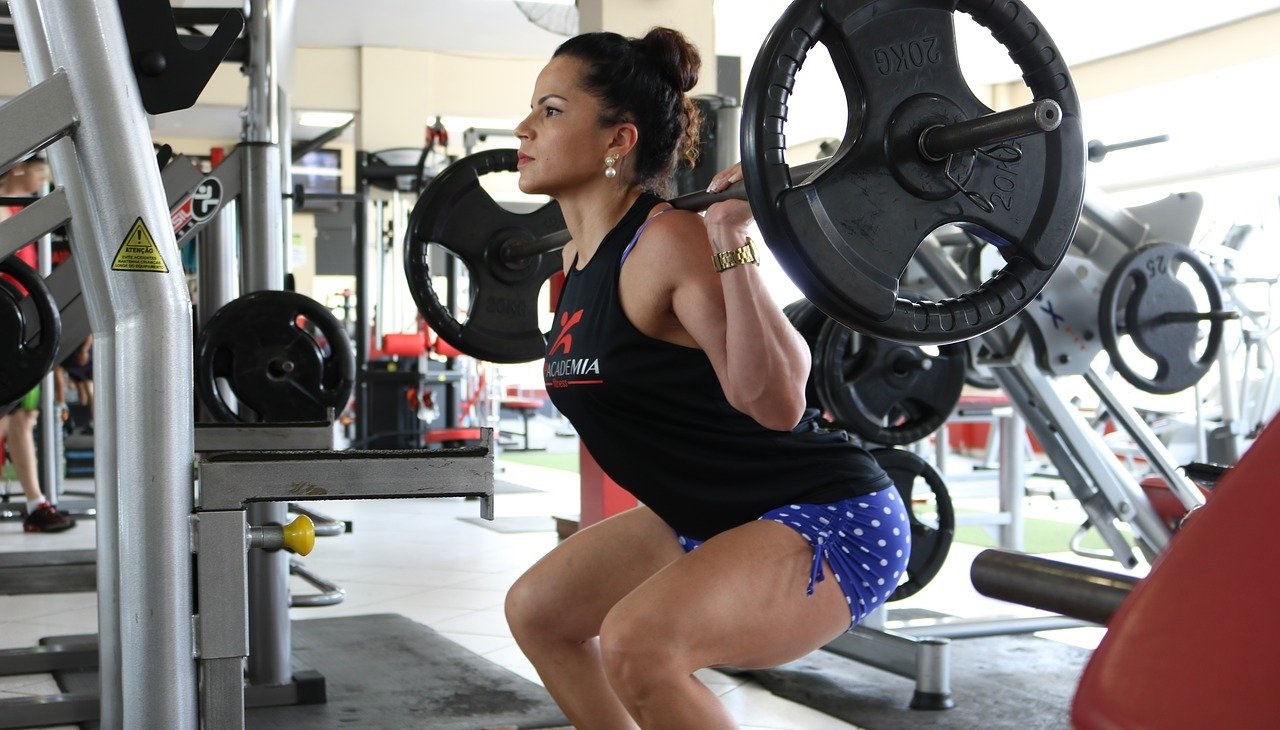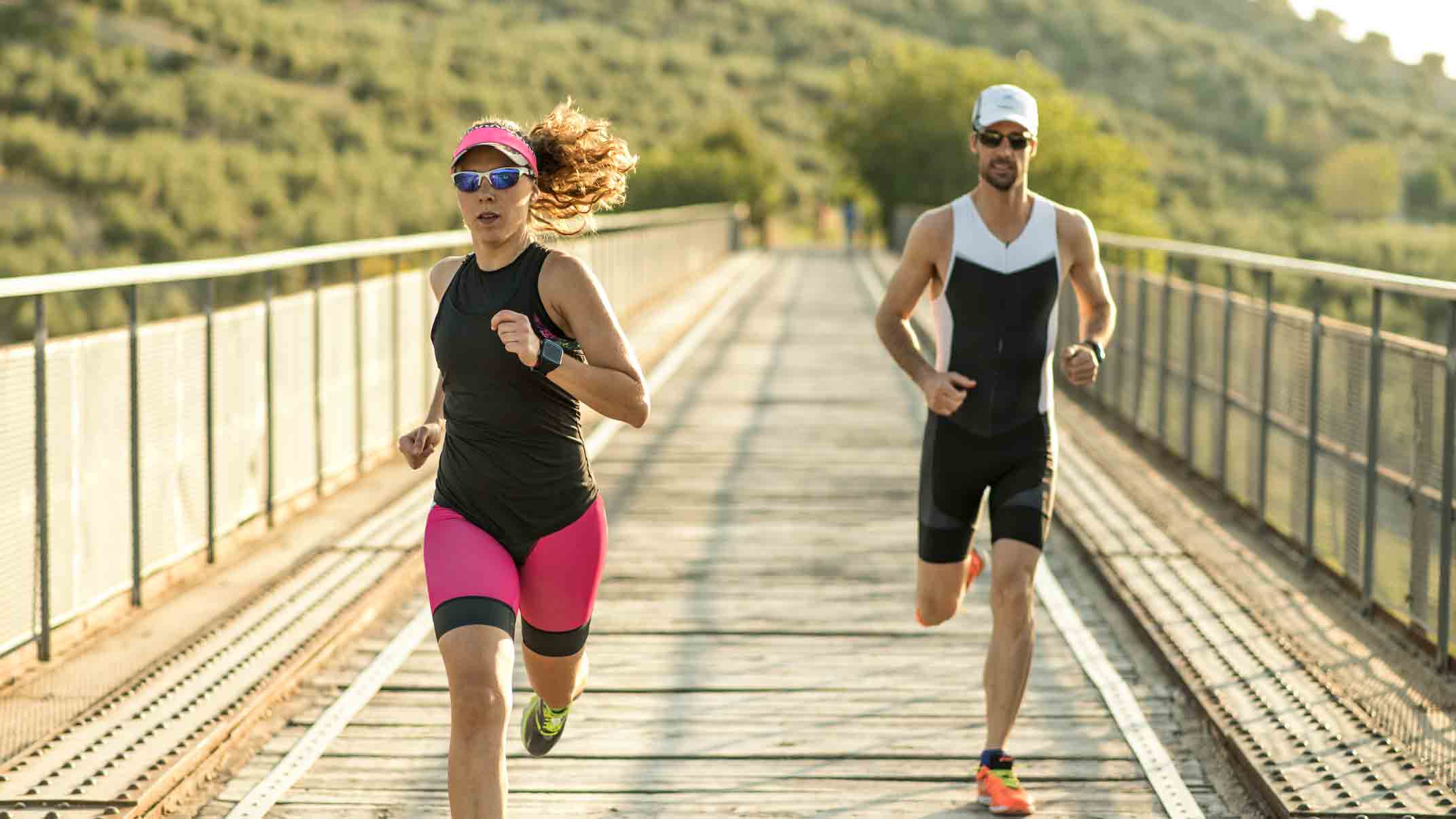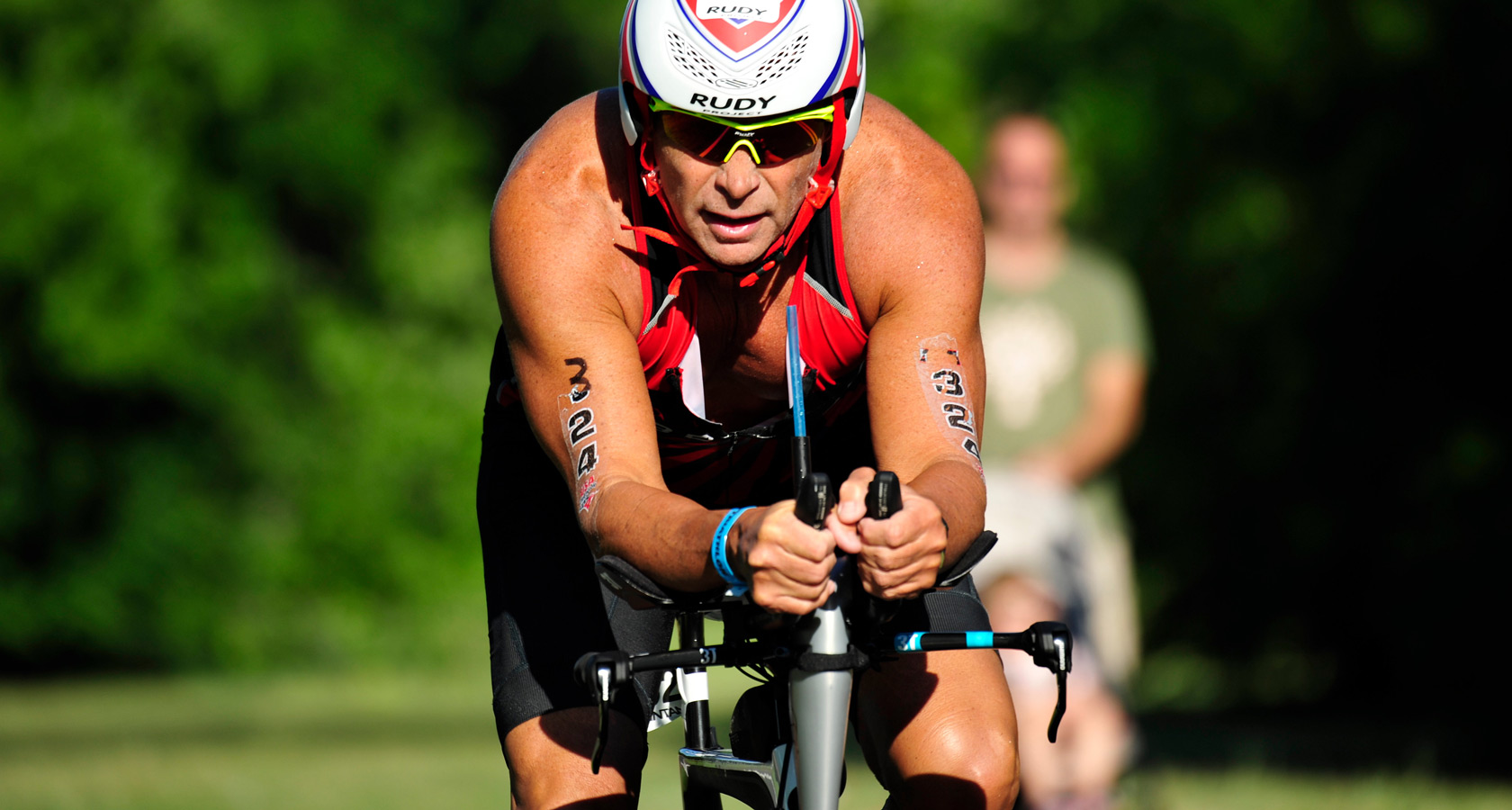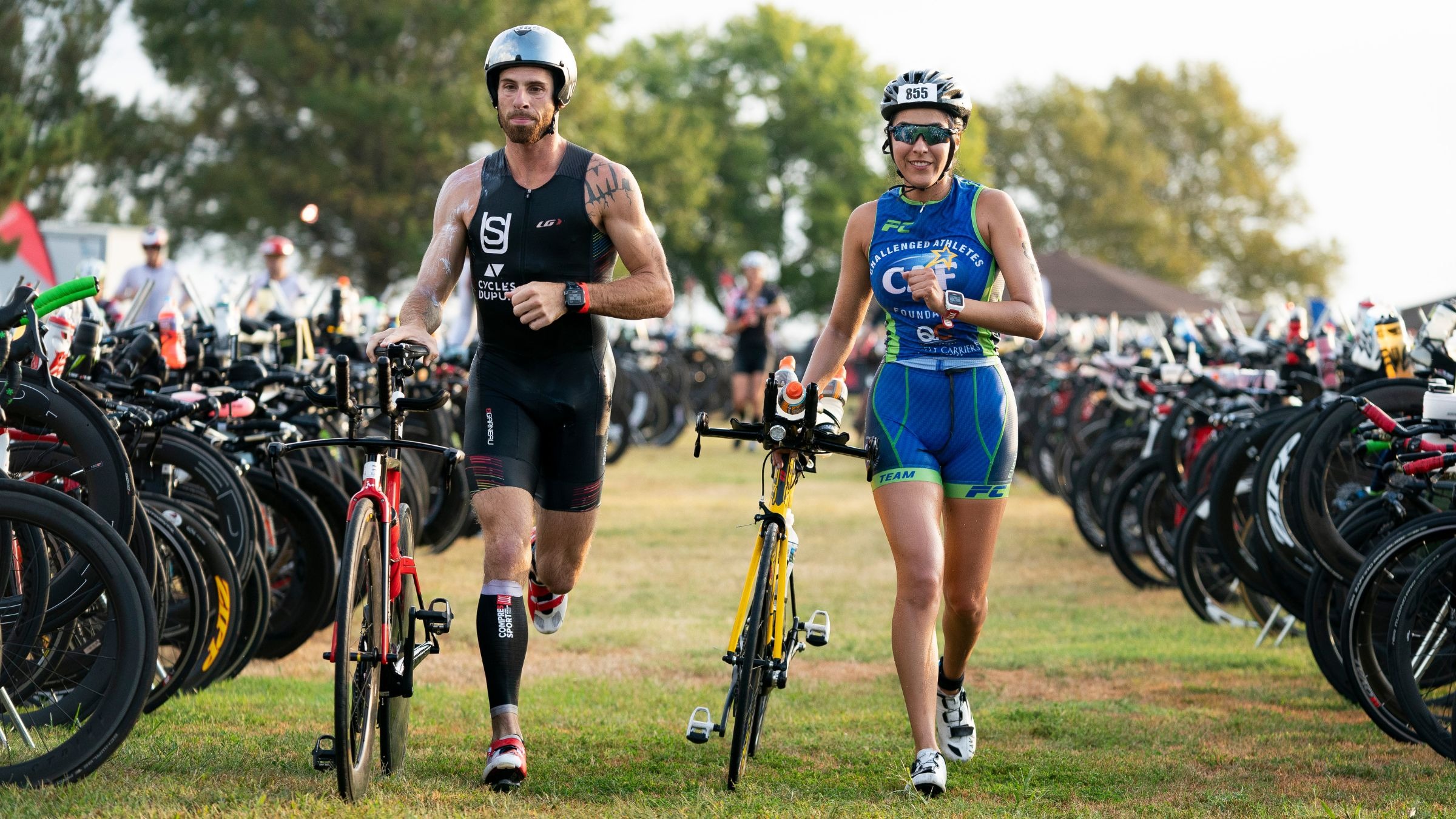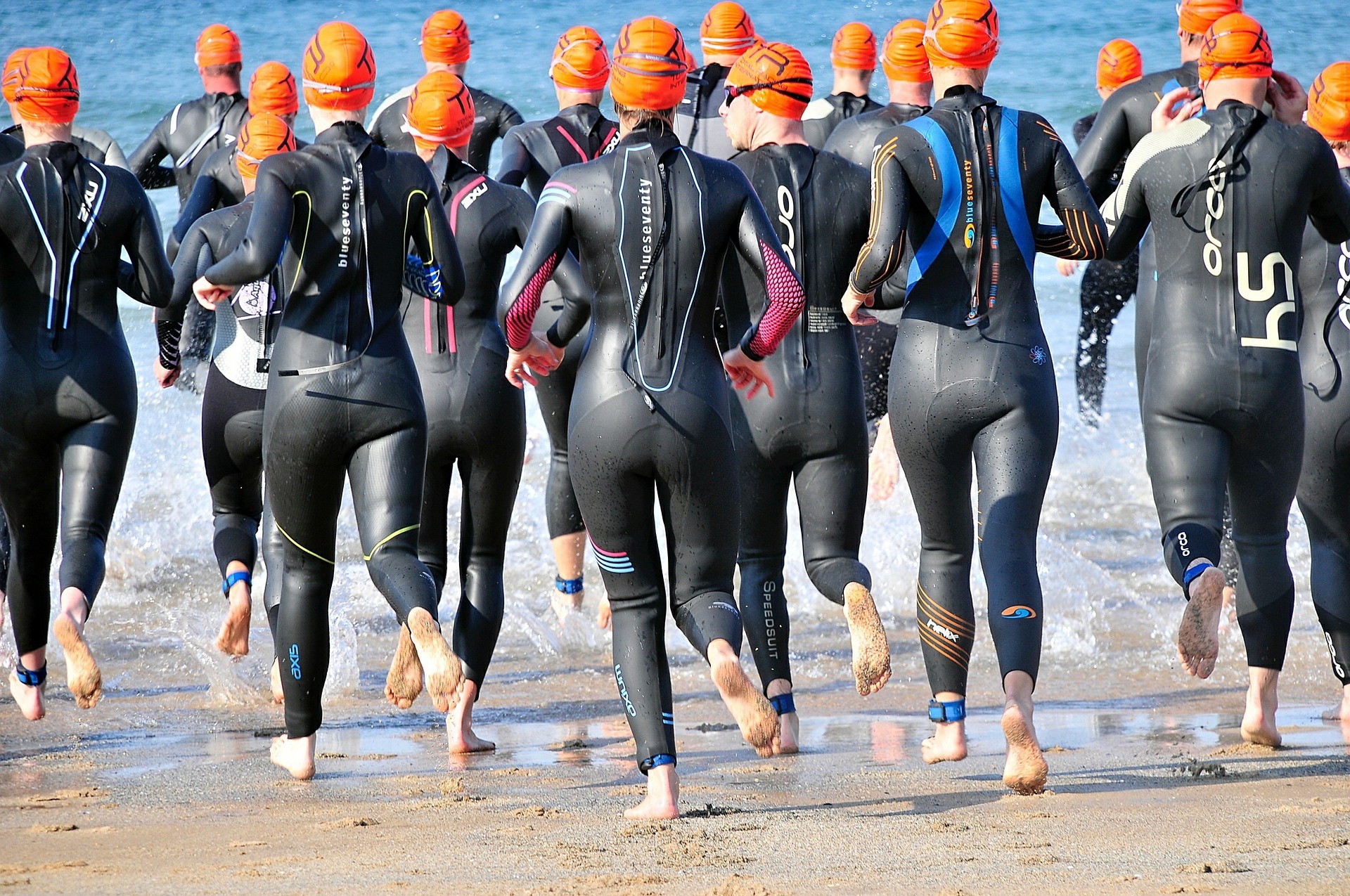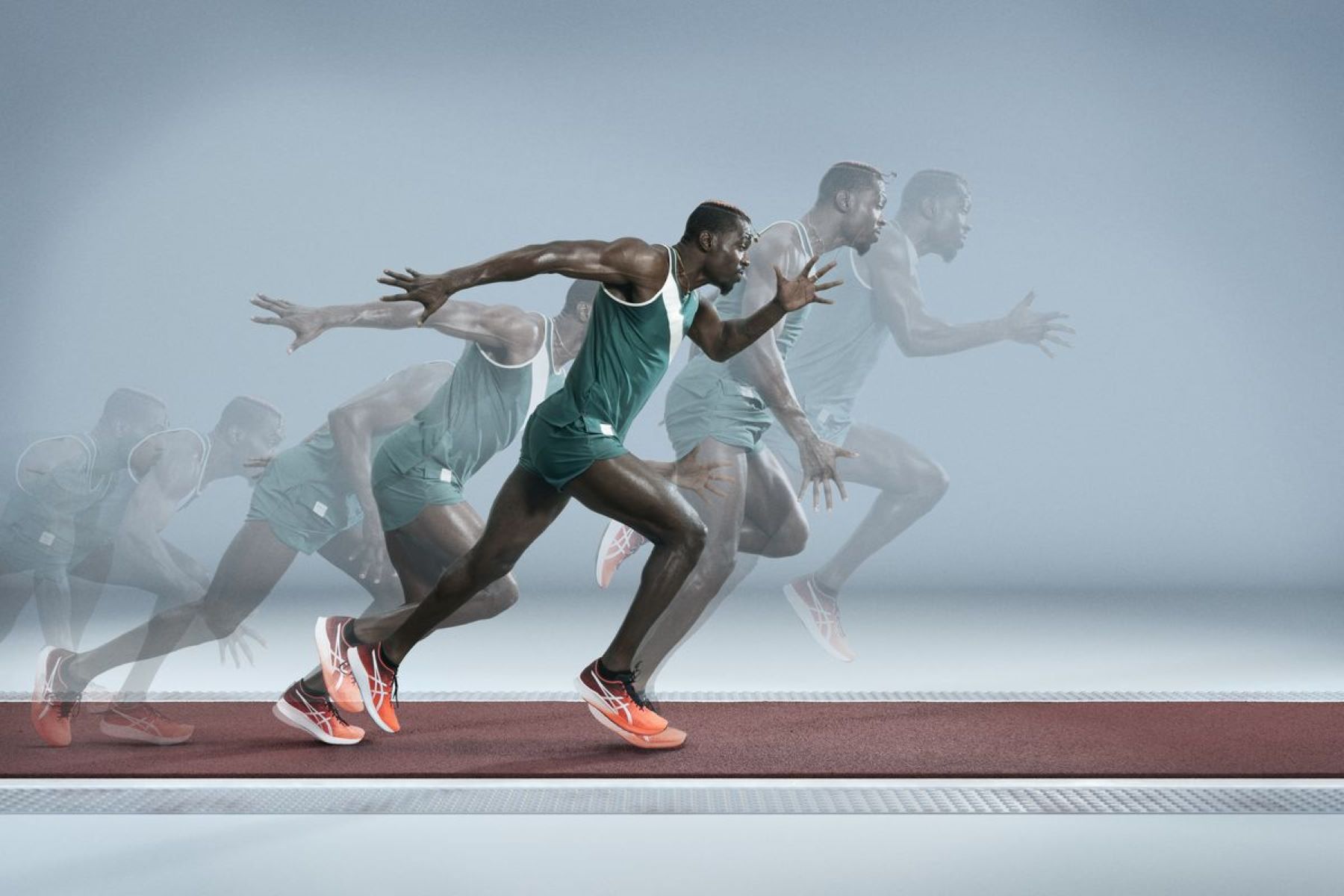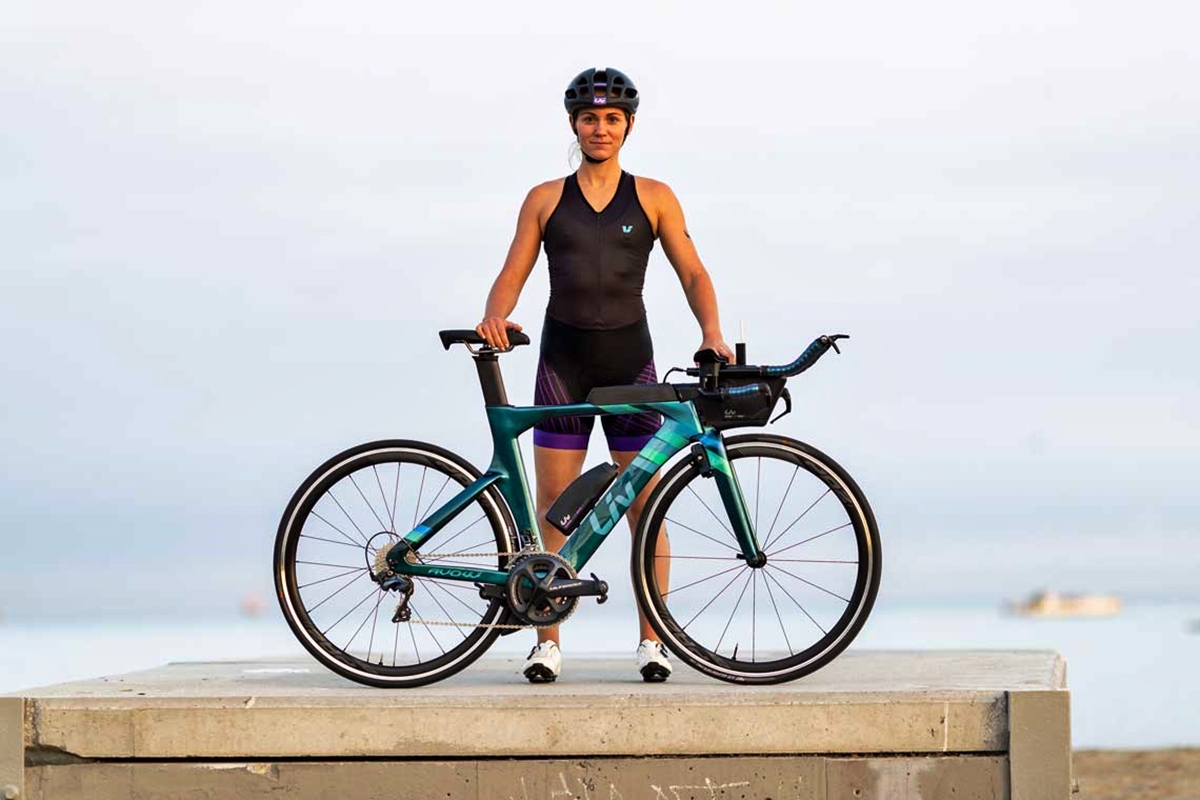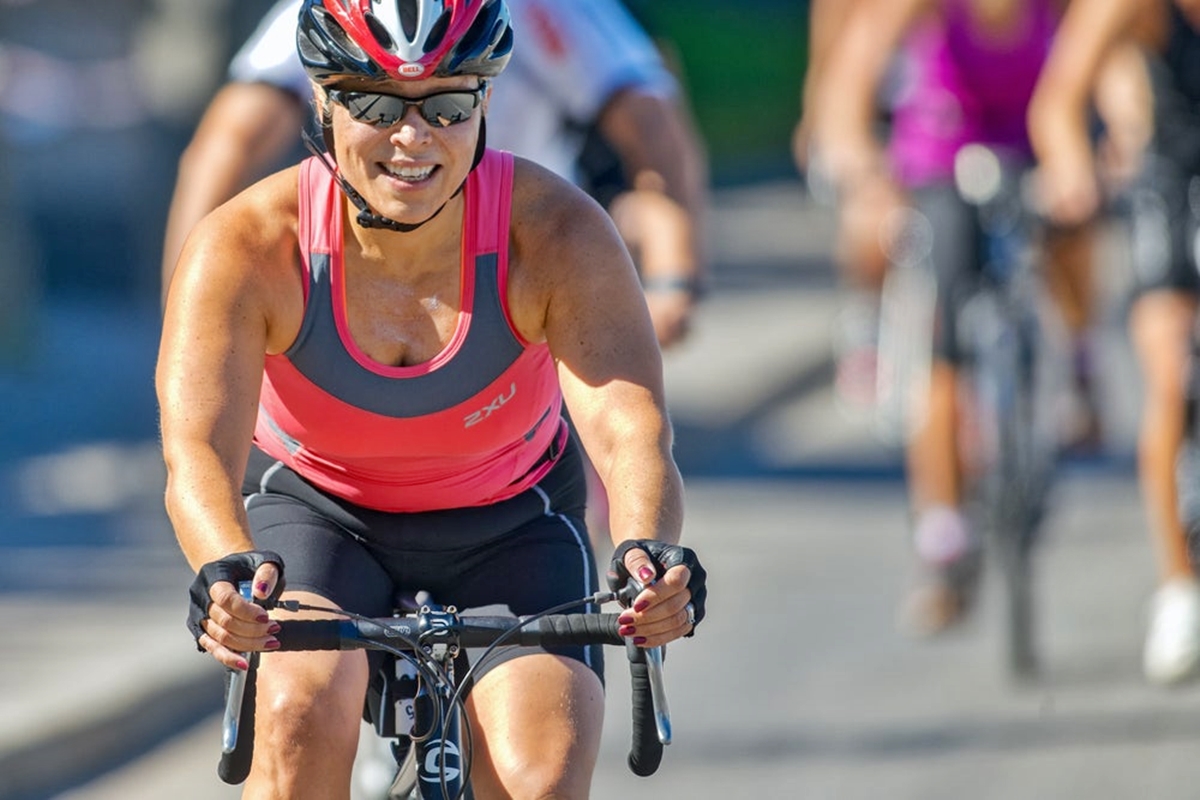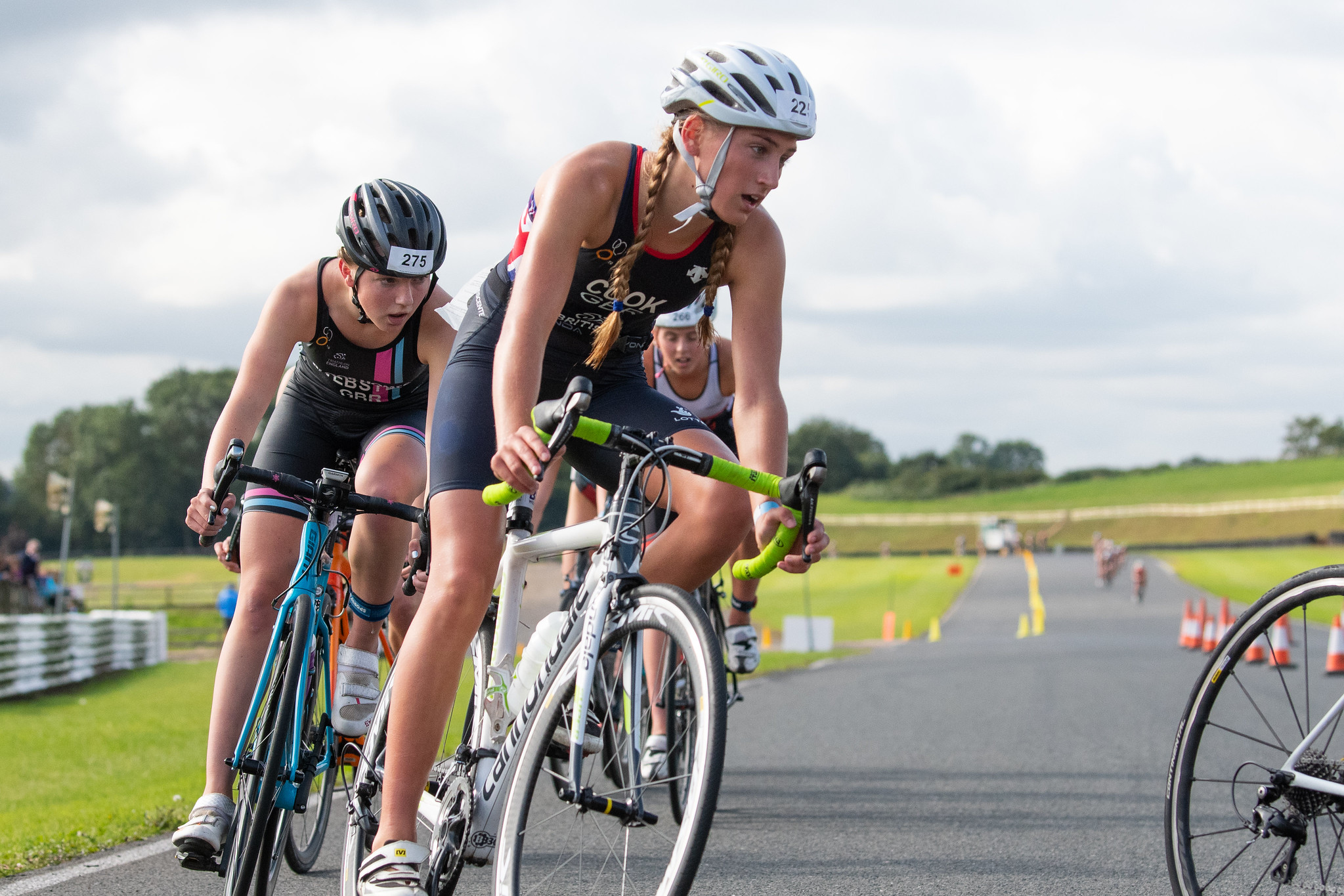

Featured
Triathlon: Why Bike Before Run
Modified: January 2, 2024
Get featured in triathlon competitions by learning the strategy behind biking before running. Enhance your endurance and race with confidence.
Introduction
Triathlon is a challenging and exhilarating sport that combines swimming, cycling, and running into a single event. Athletes compete in various distances, from sprint to Ironman, pushing themselves to the limits of their physical and mental endurance. The order in which the segments are completed can vary, depending on the race distance and personal preferences. However, a common approach is to start with the swim, followed by the bike, and finish with the run.
In recent years, there has been a growing trend among triathletes to switch the traditional order and begin with the bike segment. This change might seem counterintuitive at first glance, but it has gained popularity due to its numerous advantages and benefits. In this article, we will explore the reasons why starting with the bike before the run can be a strategic decision in triathlon races.
By starting with the bike segment, triathletes can set themselves up for a strong finish. The bike leg of a triathlon is typically the longest, both in terms of distance and time. Starting with the bike allows athletes to conserve energy during the swim, which can be a physically demanding part of the race. By minimizing exertion in the water, triathletes can optimize their performance on the bike and maintain a steady pace throughout the entire race.
Another advantage of beginning with the bike is the opportunity to warm up and get into a rhythm. Cycling is a low-impact activity that activates different muscle groups than swimming or running. By starting on the bike, athletes can gradually increase their heart rate and warm up their muscles, preparing their bodies for the more strenuous running portion. This gradual transition from one discipline to another can help reduce the risk of injuries and improve overall race performance.
Starting with the bike also provides mental benefits for triathletes. The swim leg can be the most challenging mentally, as it requires intense focus and concentration. By completing the swim first and moving on to the bike, athletes can shake off any nerves or anxiety and switch their mindset to the next phase of the race. This mental reset can be a powerful tool to boost confidence and maintain a positive attitude throughout the entire event.
While starting with the bike before the run in triathlon races offers numerous advantages, it is essential to note that the order of segments should be determined on an individual basis. Factors such as race distance, course terrain, and personal strengths and weaknesses should be taken into account when deciding the order. In the subsequent sections, we will further explore the benefits of starting with the bike, as well as provide tips and common mistakes to avoid when incorporating this approach into training.
Importance of Bike before Run in Triathlon
When it comes to triathlon races, the order in which the segments are completed can significantly impact an athlete’s performance. Traditionally, triathletes start with the swim, followed by the bike, and finish with the run. However, there is a growing trend among triathletes to switch the order and begin with the bike before the run. This change has been shown to provide several key advantages that can enhance race performance and overall experience.
One of the primary benefits of starting with the bike segment is the opportunity to conserve energy. The bike leg of a triathlon is typically the longest and requires a considerable amount of physical exertion. By tackling the bike segment first, triathletes can approach it with fresh legs and a higher energy level. This allows them to maintain a steady pace and avoid burning out early in the race. By saving energy during the swim portion, athletes can maximize their cycling performance and have more energy left for the final run.
Another important aspect of starting with the bike is the chance to warm up and find a comfortable rhythm. Cycling is a low-impact activity that engages different muscle groups compared to swimming or running. By starting on the bike, athletes can gradually ease into the race and warm up their muscles. This allows for a smoother transition from one discipline to the next, reducing the risk of muscle cramps or injuries. Additionally, finding a comfortable rhythm early on the bike can set a positive tone for the rest of the race and help athletes maintain a strong mental focus.
Mentally, starting with the bike can also provide a psychological advantage. The swim portion of a triathlon can be mentally demanding, as athletes must navigate open water and contend with the chaos of other competitors. By completing the swim first, athletes have the opportunity to reset their mindset and shift their focus to the bike. This mental transition can help reduce anxiety and nerves, allowing triathletes to approach the bike leg with a clear and focused mind. The increased mental clarity and positive mindset can positively impact race performance and overall enjoyment.
It is important to note that the decision to start with the bike before the run should be based on individual circumstances. Factors such as race distance, course terrain, and personal strengths and weaknesses should be taken into account. While starting with the bike can offer significant advantages, triathletes should consider their abilities and preferences before making any changes to their race strategy.
In the next sections, we will delve deeper into the specific benefits and considerations of starting with the bike in triathlon races. We will provide tips for incorporating this approach into training and highlight common mistakes to avoid. By understanding the importance of starting with the bike, triathletes can make informed decisions and optimize their performance on race day.
Benefits of Starting with the Bike Segment
Beginning a triathlon with the bike segment offers several advantages that can positively impact an athlete’s race performance. While the traditional order of swim, bike, and run is widely followed, the growing trend of starting with the bike segment has gained popularity for good reasons.
One of the key benefits of starting with the bike is the opportunity to conserve energy and optimize pacing throughout the race. The bike leg is typically the longest portion of a triathlon, requiring sustained effort and endurance. By starting on the bike, triathletes can approach this segment with fresh legs and a lower heart rate compared to if they had just completed the swim. This allows them to better control their effort level and maintain a steady pace throughout the entire race. By avoiding the burnout that can occur from exerting too much energy during the swim, athletes can strategically allocate their energy reserves for an efficient bike leg.
Starting with the bike also allows athletes to warm up and ease into the race. Cycling is a low-impact activity that engages different muscle groups compared to swimming and running. Starting with the bike segment provides an opportunity to gradually increase heart rate, warm up the muscles, and find a comfortable rhythm. This gradual transition from one discipline to another significantly reduces the risk of injuries and muscle fatigue. By starting on the bike, triathletes can minimize the shock to their bodies and optimize the overall race experience.
Another benefit of starting with the bike is the mental advantage it provides. The swim portion of a triathlon can be intense, with the need to navigate through water, battle waves and currents, and cope with swim anxiety. By completing the swim first and moving onto the bike, athletes can mentally reset and shift their focus to the next segment. This mental transition allows triathletes to approach the bike leg with renewed focus and confidence, setting a positive tone for the remainder of the race. The mental clarity gained from starting with the bike can also help athletes make better decisions and overcome any mental obstacles that may arise later in the race.
Furthermore, starting with the bike segment allows for better pacing strategy. As the longest portion of the race, it is crucial for triathletes to have a well-thought-out pacing plan. By starting with the bike, athletes can establish a strong foundation for their overall race strategy. They can set a consistent pace, monitor their effort level, and make adjustments as necessary. Starting with a strong bike leg can provide a psychological boost, as athletes feel confident knowing they have completed a significant portion of the race with an optimal pace.
In summary, starting with the bike segment in a triathlon provides several benefits that can positively impact a triathlete’s race performance. It allows for energy conservation, gradual warm-up, mental clarity, and better pacing strategy. However, it is important for each individual athlete to assess their capabilities, race distance, and personal preferences before deciding on the order of segments in a triathlon. By considering these factors, triathletes can make an informed decision and optimize their performance in line with their unique needs and goals.
Factors to Consider when Deciding the Order of Segments
Deciding on the order of segments in a triathlon requires careful consideration of various factors. While starting with the bike segment has its advantages, it is important to evaluate individual circumstances to determine the most suitable order for each athlete.
One of the key factors to consider is the race distance. Different race distances have varying demands on the body and require different strategies. For shorter distance races, such as sprints or Olympic distances, the traditional order of swim, bike, and run may work well. These races are usually completed in a shorter time frame, allowing athletes to tackle the bike and run segments without excessive fatigue. However, for longer distances like Ironman or ultra-distance races, starting with the bike before the run can be beneficial. The longer duration of these races necessitates more strategic energy management, and starting on the bike can provide an advantage in pacing and energy conservation.
The course terrain is another crucial factor to consider. The nature of the course, including elevation changes, technical sections, and surface conditions, can impact the effectiveness of starting with the bike. If the course features challenging climbs or technical descents, starting on the bike may allow athletes to tackle these sections with fresh legs, maximizing power output and control. Conversely, if the run portion of the course includes steep hills, starting with the swim may be more advantageous, as athletes will have fresher legs to tackle these challenging sections later in the race.
An athlete’s personal strengths and weaknesses should also be taken into account. Triathletes should assess their proficiency and comfort level in each discipline to determine the most suitable order. Some athletes may excel in swimming and find it advantageous to start with the swim to establish an early lead, while others may be more confident and experienced cyclists who benefit from starting on the bike. Considering personal strengths can help athletes play to their advantages and build a strategy that maximizes their performance.
Weather conditions and external factors should not be overlooked when determining the order of segments. Factors such as wind, temperature, and humidity can significantly impact performance, particularly in the bike segment. Assessing weather conditions and aligning the order of segments to leverage favorable conditions can provide an additional advantage. For example, if the wind is expected to be stronger later in the day, starting with the bike may allow athletes to take advantage of calmer conditions and maintain a more consistent pace.
Lastly, it is crucial to respect personal preferences and comfort levels. Each athlete has their own unique preferences and race experiences. Some athletes may have established a routine and mental preparation that works best for them, and deviating from that may cause unnecessary stress or discomfort. It is essential to consider personal preferences, as mental well-being and confidence play a significant role in race performance.
Considering these factors will help triathletes make an informed decision regarding the order of segments in a triathlon. It is important to carefully weigh the advantages and disadvantages based on race distance, course terrain, personal strengths and weaknesses, weather conditions, and individual preferences. By doing so, athletes can tailor their approach to maximize their performance and enhance their overall race experience.
Tips for Incorporating Bike before Run in Training
If you have decided to incorporate starting with the bike before the run in your triathlon training, there are several tips to consider to maximize the effectiveness of this approach. By implementing these tips into your training routine, you can improve your performance and prepare yourself for a successful race day.
1. Gradual Transition: When transitioning from one discipline to another, it is important to allow your body to adjust gradually. Start by incorporating shorter bike workouts immediately after swimming sessions. This will help your body adjust to the change in muscle activation and ease your transition from the swim to the bike segment. Over time, gradually increase the duration and intensity of your bike workouts to match the demands of the race.
2. Brick Workouts: Brick workouts, which involve combining two disciplines back to back, are a valuable training tool for triathletes. Specifically, bike-to-run brick workouts are instrumental in simulating the feeling of transitioning from the bike segment to the run segment. It helps condition your body to adjust quickly and efficiently from cycling to running. Start with shorter brick sessions and gradually increase the distance and intensity as you build your endurance and comfort level.
3. Focus on Pacing: Pacing is crucial when starting with the bike before the run. It is essential to maintain a steady and sustainable effort level during the bike leg to avoid overexertion and fatigue for the run. Practice pacing strategies during your bike workouts and pay attention to your heart rate or power output. Consistency and discipline in your pacing will help you conserve energy for the run, ensuring a strong finish.
4. Swim Familiarization: Since you will be starting the race on the bike, it is important to familiarize yourself with open water swimming. Open water swimming can be more challenging than swimming in a pool due to factors such as currents, waves, and limited visibility. Incorporate regular open water swims into your training to improve your comfort level, navigation skills, and overall confidence in the water.
5. Mental Preparation: Starting with the bike segment requires mental adaptability and focus. Mental preparation is key to maintaining a positive mindset throughout the race. Visualize the race in its entirety, mentally rehearsing the smooth transition from the swim to the bike segment. Practice positive self-talk, affirmations, and relaxation techniques to stay calm and confident. Incorporate mindfulness or meditation practices into your training routine to enhance your mental resilience.
6. Train for Transitions: Efficient transitions play a vital role in triathlons. Allocate time in your training to practice the transition from the bike to the run. Set up a mock transition area, practice quickly changing into your running gear, and simulate the feeling of running with tired legs. By training for transitions, you can minimize the time spent in the transition area and seamlessly move from one segment to another.
Remember, every athlete is unique, and there is no one-size-fits-all approach. It is important to listen to your body, adapt the tips to fit your individual needs, and consult with a coach or experienced triathlete for personalized guidance. With consistent training and strategic preparation, incorporating starting with the bike before the run into your training routine can lead to improved performance and a successful race day.
Common Mistakes to Avoid
When incorporating the bike before the run in your triathlon training, it’s important to be aware of common mistakes that athletes often make. By avoiding these pitfalls, you can optimize your training and improve your overall race performance.
1. Neglecting Swim Fitness: While the bike leg may be your focus, it’s crucial not to neglect your swim fitness. The swim segment sets the tone for the race, and a weak swim can impact your overall performance. Dedicate sufficient time to swim training to build endurance, improve technique, and enhance your confidence in the water.
2. Skipping Brick Workouts: Brick workouts, which involve combining two disciplines back to back, are essential for training your body to transition from the bike to the run. Skipping these workouts robs you of the opportunity to adapt to the unique challenges of running on fatigued legs. Incorporate regular bike-to-run brick workouts to improve your transition skills and build endurance for race day.
3. Poor Pacing Strategy: Starting with the bike segment requires careful pacing to avoid burning out before the run. Failing to establish a solid pacing strategy can lead to a significant drop in performance and leave you struggling during the run. Practice pacing techniques in training to find your optimal effort level and maintain a consistent pace throughout the bike leg.
4. Neglecting Mental Preparation: The mental aspect of triathlon is crucial, particularly when starting with the bike. Neglecting mental preparation can lead to negative thoughts, increased stress, and decreased performance on race day. Incorporate mental training techniques, such as visualization, positive self-talk, and relaxation exercises, to build mental resilience and enhance your overall race experience.
5. Poor Transitions: Transition times can make a significant difference in your race results. Failing to streamline your transitions can result in valuable time lost and disrupt your momentum. Practice your transition routines, including efficiently changing gear and incorporating strategies to minimize transition times. By refining your transition skills, you can gain a competitive edge and maintain a smooth flow from one segment to another.
6. Failing to Adapt to Course Terrain: Every race presents unique challenges, particularly in terms of course terrain. Failing to adapt your training to match the specific course conditions can hinder your performance. Study the race course and incorporate training sessions that simulate the terrain, whether it’s hills, technical descents, or uneven surfaces. By familiarizing yourself with the course demands, you can better prepare your body and develop specific strengths required for success.
7. Overlooking Recovery: Training for a triathlon is physically demanding, and proper recovery is essential for maximizing performance. Overlooking recovery can lead to decreased performance, increased risk of injuries, and overall burnout. Prioritize rest days, proper nutrition, sleep, and active recovery techniques to allow your body to repair and adapt to the training stress. By incorporating adequate recovery into your training plan, you can maintain consistency and optimize your performance on race day.
Awareness of these common mistakes and proactive steps to avoid them will benefit your training and race performance. Remember, each athlete is unique, so it’s important to listen to your body, seek guidance from experienced triathletes or coaches, and adjust your training approach accordingly. By avoiding these mistakes, you can set yourself up for success and achieve your triathlon goals.
Conclusion
Starting with the bike before the run in triathlon races has gained popularity for its numerous benefits and advantages. By strategically altering the order of segments, triathletes can conserve energy, optimize pacing, and enhance their overall race performance. Beginning with the bike segment allows for a gradual transition, as well as mental and physical preparation for the challenges ahead.
When incorporating this approach into training, it is essential to consider various factors, including race distance, course terrain, personal strengths, and preferences. By assessing these factors, triathletes can make informed decisions and tailor their training to maximize their performance on race day.
Incorporating starting with the bike before the run requires careful planning and consideration. Tips such as gradual transitions, brick workouts, pacing strategies, and mental preparation can be invaluable in optimizing training effectiveness. Avoiding common mistakes like neglecting swim fitness, poor pacing, and inadequate mental preparation can further contribute to a successful race experience.
In conclusion, while the traditional order of triathlon segments may be widely followed, experimenting with starting on the bike before the run can be a strategic decision for triathletes. Each athlete’s journey is unique, and there is no single formula for success. By taking into account individual circumstances and applying the tips and strategies mentioned, triathletes can find the approach that best suits their abilities and goals. With proper training, mental preparation, and attention to key factors, triathletes can optimize their performance and achieve their personal best in triathlon races.

